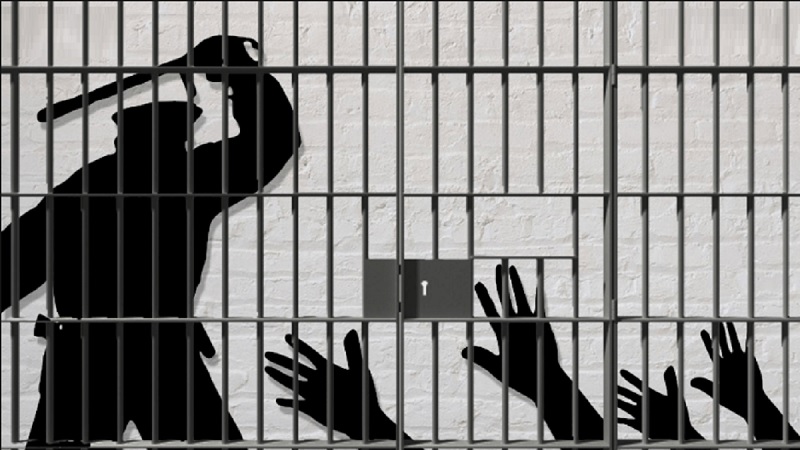
Image courtesy:blog.ipleaders.in
In a recent horrifying incident, 22-year-old Rehan was subjected to custodial violence by UP police. As per reports, the police brutally inserted a wooden stick into his genitals and gave him repeated electric shocks on a mere suspicion of cattle slaughtering. Though an FIR under Sections 338 (causing grievous hurt), 323 (voluntarily causing hurt), 506 (criminal intimidation), 147 (rioting) and under the Prevention of Corruption Act was registered against a sub-inspector, four constables, India witnesses five custodial deaths every day and the methods of violence include but are not limited to hitting private parts, pulling nails, urinating in the mouth, and even rape. Further, the report released by the ‘National Campaign against Torture’ highlights the fact that 60% of the people who died in custody were from an unprivileged and weaker section of society. The disproportionally higher number of custodial deaths from these sections is symptomatic of underlying biases and predispositions among public officers as well as an accidental result of increased occurrences of custodial violence. In my opinion, be it privileged or unprivileged, custodial violence is the worst kind of crime that can happen in a civilized society, and nothing is worse than seeing a person who is supposed to protect you being violent.
Prohibition of custodial violence.
Articles 21 and 22 of the Indian Constitution, Sections 24, 25, and 26 of the Indian Evidence Act, 1872; Sections 330, 331, 348, and 376 (2) of the Indian Penal Code, 1860; Sections 41, 41A, 41B, 41C, 41D, 46, 49, 54, 167 (2), and 176 (1) of the Code of Criminal Procedure, 1973; and Section 29 of the Indian Police Act, 1861 have all attempted to combat the threat of custodial violence. In furtherance of the same, the SC has taken very critical stances in such cases and has posed angry expressions. In the case of Sunil Batra v. Delhi Administration, the SC held that Article 21 guarantees the right to live with dignity, and any torture or inhumane treatment by the police strikes at the heart of Article 21. Further, in the case of Yashwant and Others v. State of Maharashtra,the SC affirmed the convictions of nine Maharashtra police officers in the 1993 custodial death case and reminded them of “With great power comes greater responsibility”. Even after the anguish expressed in many other cases like Munshi Singh Gautam v. State of Madhya Pradesh, Khatri v. State of Biharand State of U.P. v. Ram Sagar Yadav, there appears no softening of attitude in the inhuman treatment to the people who are in custody.
Who will police the police?
The question highlighted in this subheading was first posed by Justice Iyer in the case of Prem Chand (Paniwala) v. Union of India, and the answer to the same at an extent was tried to be addressed in Dk Basu v. State of Bengaland Shafhi Mohammad v. State of Himachal Pradesh, where the SC directed the state governments to install CCTV cameras in every police station. Consequently, CCTV cameras were installed in some police stations, but they were useless. The officers often claim the dysfunctionality of CCTV cameras in order to escape liability, which creates an environment where the police could abuse their power, disregarding human rights and individual liberty, and allow them to do whatever they wanted to while conveniently claiming that the CCTV cameras are not functional. Even recently, the police repeated the same narration before Allahabad HC and argued that a 5.6 ft man, Altaf, had allegedly hanged himself to death from a 2 ft pipe in police custody. A similar stance was taken in other HCs, including but not limited to Delhi, Bombay, Kerala, and Madhya Pradesh, despite the landmark judgement delivered by the SC in the case of Paramvir Singh Saini v. Baljit Singh,in which the SC issued a number of guidelines and made it quite clear that every corner of a police station (including outside, but not inside of toilets) must be equipped with the best possible CCTV cameras at the earliest. The court also looked at the issue of CCTV that wasn’t working correctly and said that if CCTV is broken, it needs to be fixed right away.
While the directions made by the Supreme Court in Paramvir Singh are of utmost significance for policing the police and monitoring the grave violations of human rights within the courtyard of the police station, only a little has been done so far to implement the same. In March 2021, the Supreme Court ordered all the states to install CCTV cameras within 5–9 months. However, they welcomed the order with great reluctance and hardly bothered to comply with it. many other reforms, such as the recognition of custodial violence as an offence in and of itself, as well as violence in and outside of police stations, must be implemented in order to completely eliminate custodial violence, the use of CCTV cameras to monitor police officers is a critical step in that direction and is likely to bring about larger reforms in the criminal justice system if properly implemented. Therefore, the Supreme Court must ensure that its judgements are rigorously implemented while filling up the gaps in the system to condense the occurrences of custodial violence.
(The authors are B.A.LL. B (Hons) students at Jamia Millia Islamia)
Related:
UP cops electrocute Muslim youth, insert stick in his rectum, violate judicial precedents on torture
Mumbai: Dalit youth tied and beaten to death with an iron rod!
UP: Goons carve trishul on a man’s face!
Hate Watch: Dalit man thrashed, dragged like an animal by so called “upper caste” goons
Hate Watch: Dalit, Covid health worker, killed for sporting moustache in Rajasthan
Dalits attacked by 300 men in UP village, 13 upper-caste men arrested